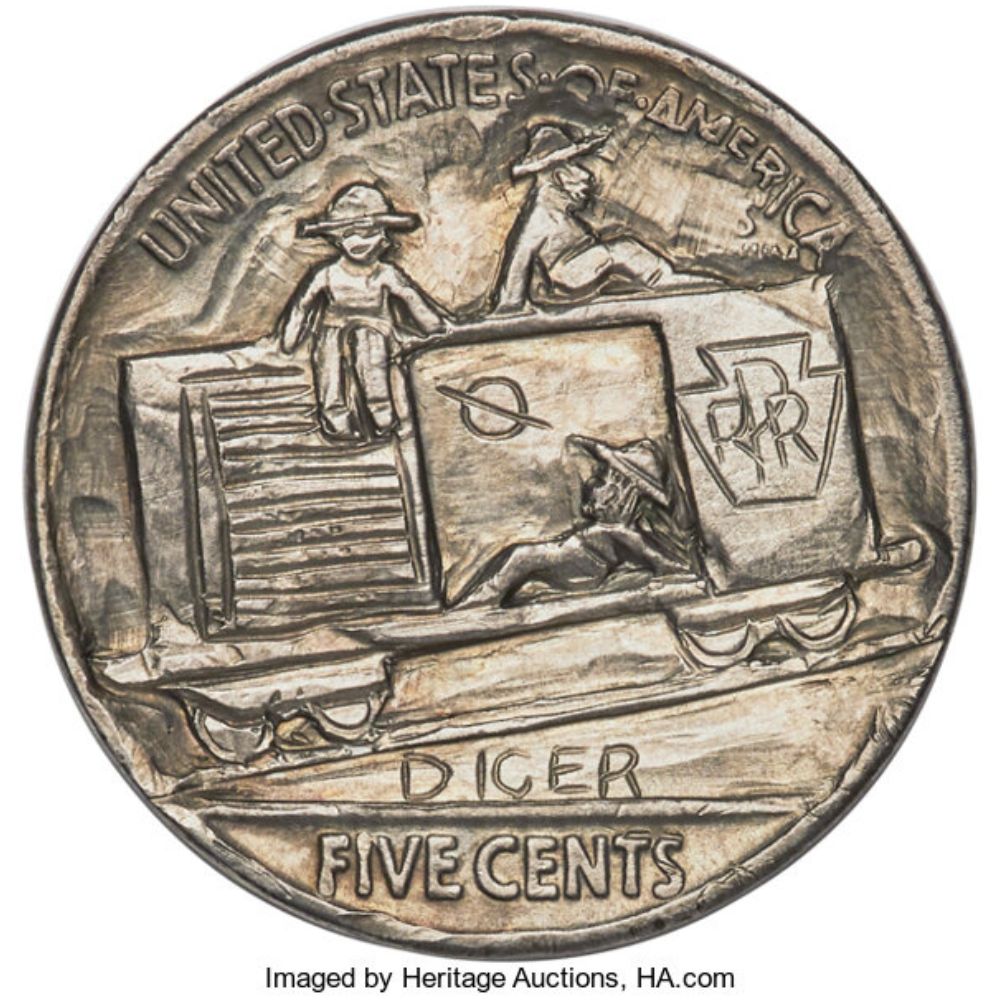
Collecting hobo nickels may appear to some as novelty items that are not typically valuable; however, the history behind these coins is fascinating and some hobo nickels have been record breakers at auction houses over the years.
Prior to what is now known as the hobo nickel, altered coins predate the hobo nickel. For example, the “potty coin” was the more common type of alteration in the early 1850s. The coins used for alteration included the half dime and the trade dollar. These early examples made it appear as though Lady Liberty was sitting upon a chamber pot.
From 1913 when the Buffalo nickel was introduced, it soon became the coin of choice for alteration by those who would travel across the United States of America on the railroad cars. Those people became known as hobos. The hobos would carve intricate designs into the Buffalo nickels and the hobos would trade their carved designs for food and shelter along their journey. It is reminiscent of a bartering system and some of those original designs have survived throughout the years.
Whilst there were many designers, two became especially popular and well-known, George Washington “Bo” Hughes and Bertram “Bert” Weigand. It has been claimed that Bo Hughes learned the carving techniques from Bertram Weigand, who used “Bert” in his signatures.
There have been more surviving pieces being for purchase in recent years, and those created by Bo Hughes tend to be more widely available. The “Dicer” hobo nickel created by Bo Hughes in 1939 has previously been sold at auction for more than $24,000.
The scarcity of those created by Bertram “Bert” Weigand tends to add to their value, which is evident by the auction records for Bert’s carvings. The carving Bert made of his friend Elizabeth sold for almost $32,000 and many of Bert’s carvings are worth thousands of dollars. Bert’s signature method of authenticating his pieces was to remove the LIY from LIBERTY which would ensure that only BERT remained. It is worth noting that Burt continued to create carvings following his imprisonment. However, most of his pieces are continuing to prove to be an appreciating investment for collectors who thrive on collecting rare and scarce coins.
Whilst Bert and the other carvers of the day may not have realized the extent upon which their hobby and method of survival has had upon future generations of carvers; the skill and hobby of creating modern day hobo nickels have evolved and continue to be popular.



